Posts Tagged ‘Sicily’
-
A Traditional Crib
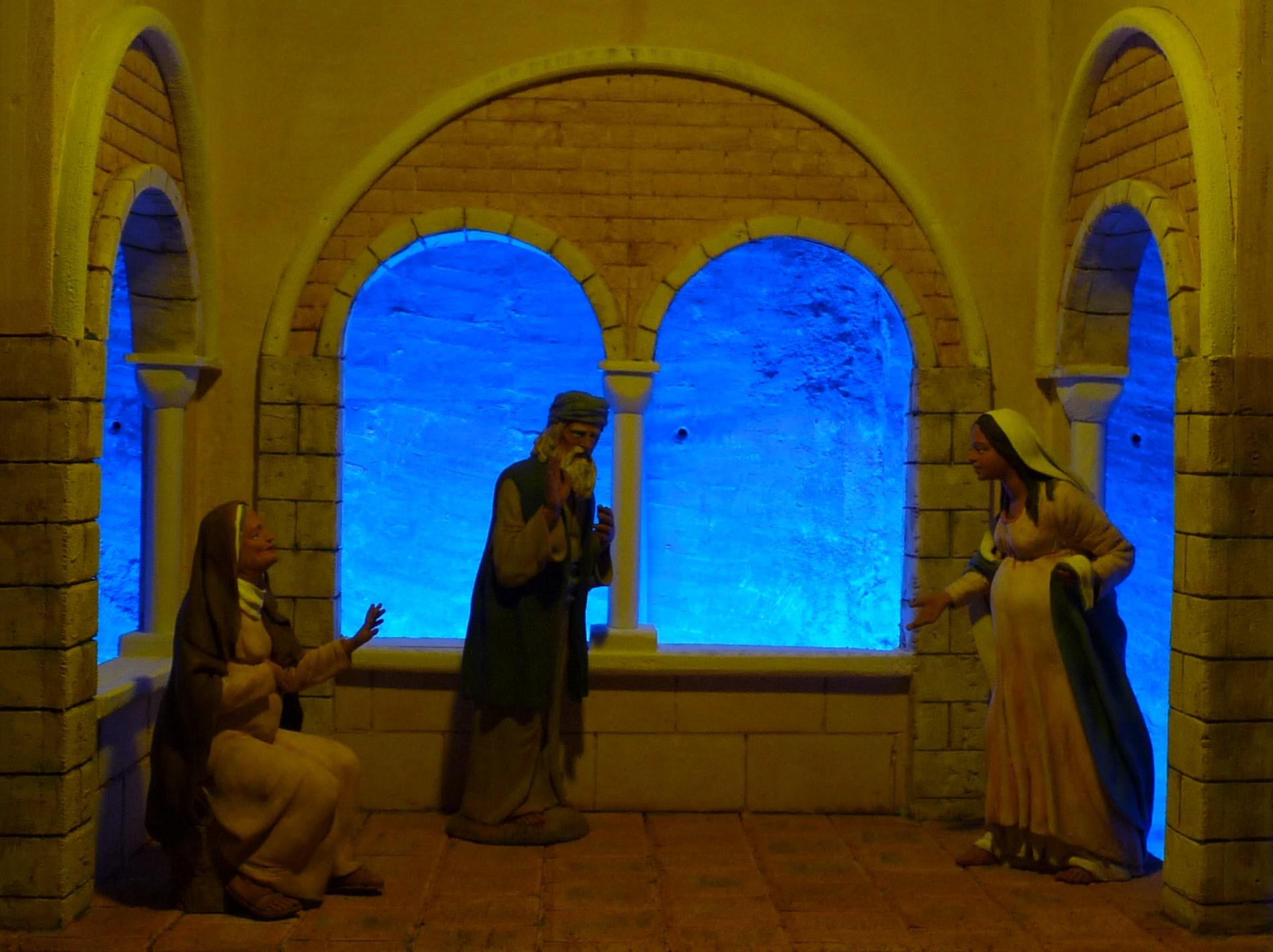
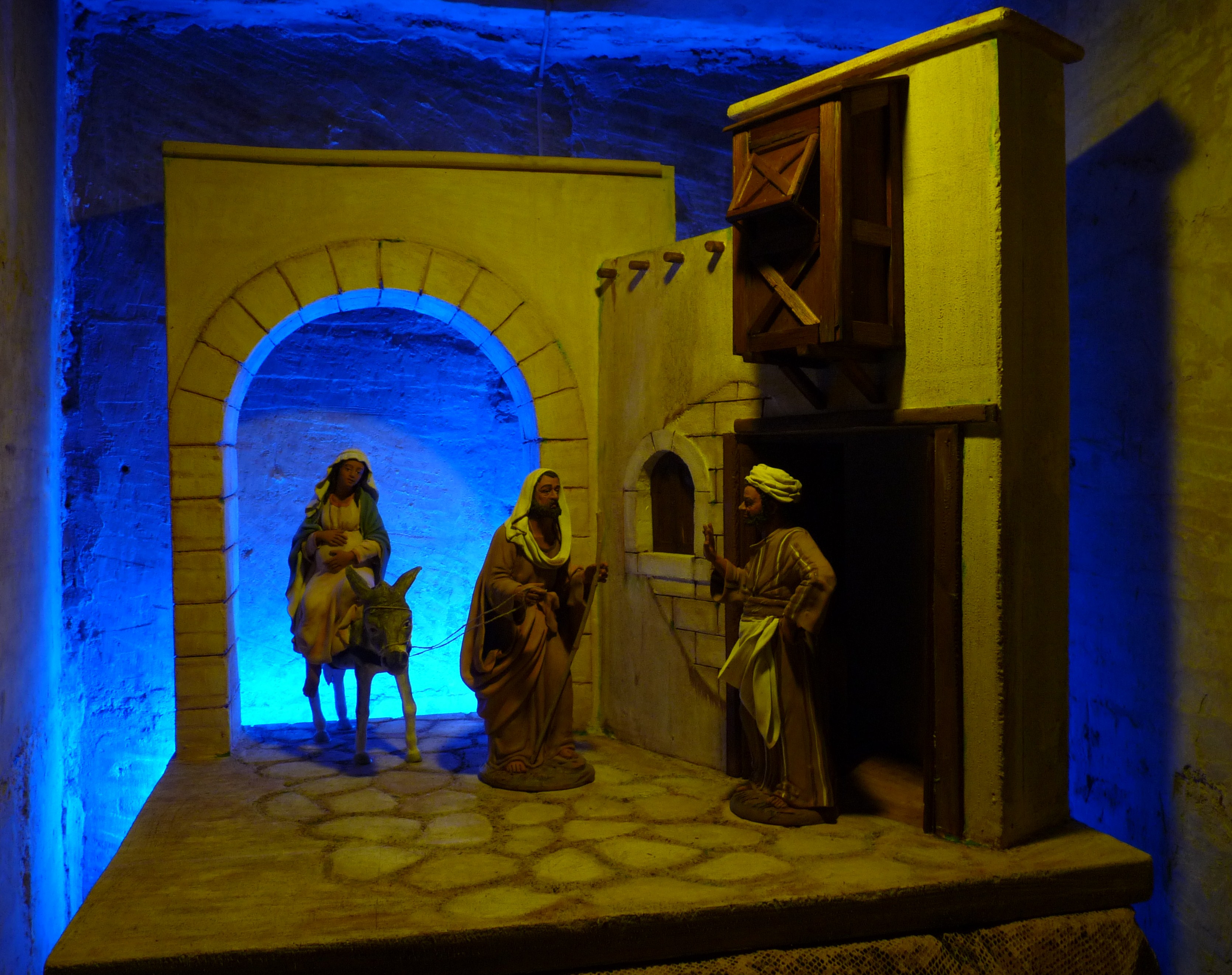
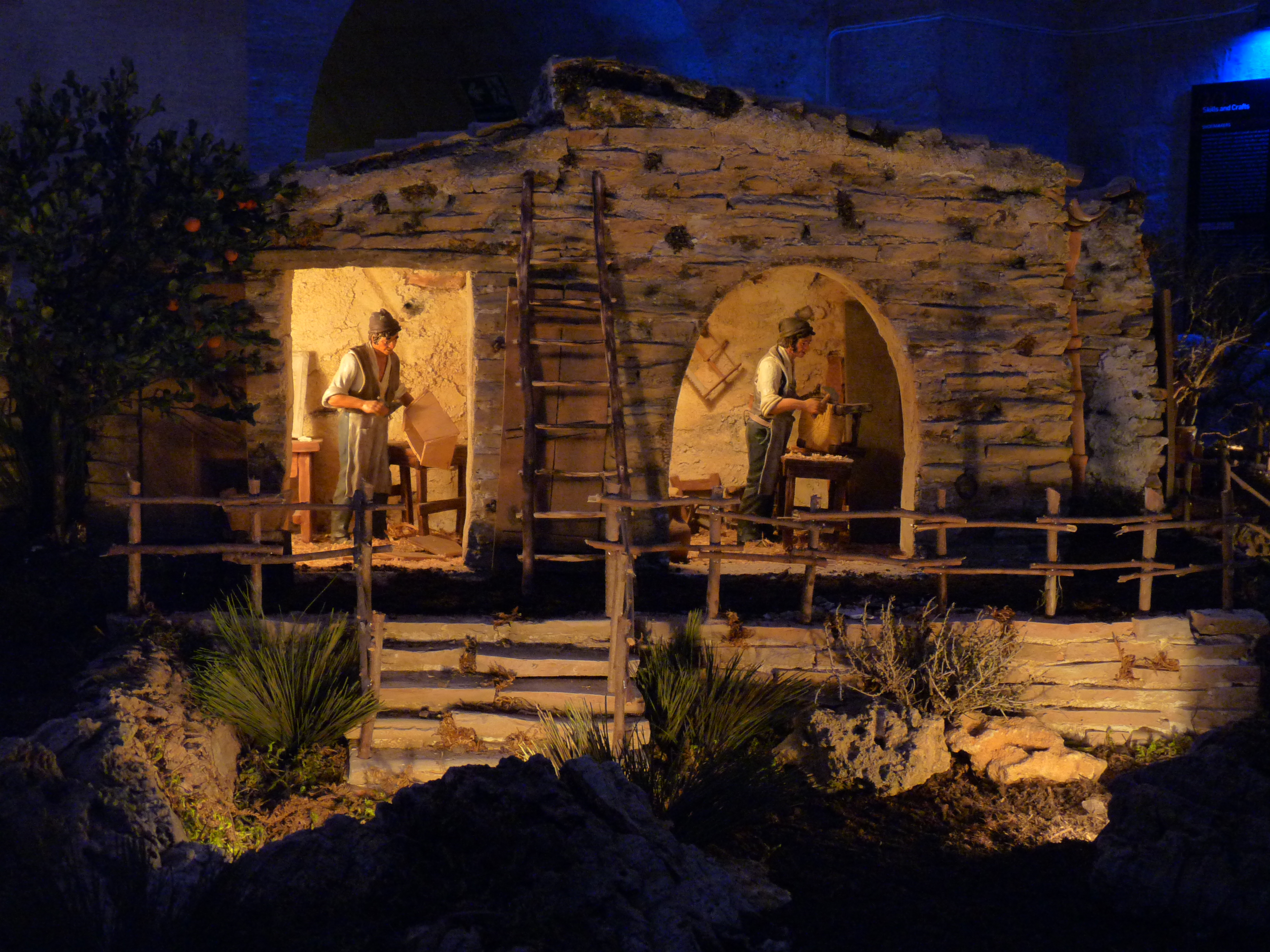
“The setting up of a crib during the Christmas season has become a worldwide tradition. However probably, few are aware that by doing this, they are reproducing a custom that was originated by St Francis D’Assisi in the 13th century,” told me Francesca Cannavò, the Curator of the Nativity Museum which is located in the crypt of St Augustine’s Church in Old Mint Street, Valletta.
“The main aim of this museum is to promote a deeper understanding and meaning regarding the nativity of Jesus and how this sacred event has been represented artistically during all these years by various artists,” explained Andrea Consalvo Rifici, the marketing manager.
Indeed, during these last months, the ambience of this huge crypt has been completely transformed into a landscape which instills the perception of being absorbed back in time, right to the period of this holy nativity.
“We want the visitors to walk around this place and to meditate about what was happenning in the days before baby Jesus was born and also what took place soon after.”
Various panels with interesting information accompany the visitors throughout this journey which takes them deep within the old crypt in search of the revelation of the Christmas story. Meanwhile, heavenly music engages the visitors and immerses them into the sanctity of this experience.
“In the old days, many of the people were uneducated and so they could not read the scriptures. Therefore, the Church set up various plays and commissioned many paintings in order to create a visual narrative with which the people could comprehend certain episodes in Jesus’ life.”
In fact, beautiful reproductions of renowned artistic works that portray the nativity scene compliment and enhance the significance of this museum, as the visitors can enjoy and absorb the different interpretations that were effected by remarkable painters such as Leonardo da Vinci, Giotto, Tiziano, Rubens, Botticelli, Carvaggio, Fra Angelico, and Hugo van der Goes.
“It is believed that these representations of the nativity have inspired St Francis of Assisi to compose the first crib which he set up in a cave. Eventually, this idea was so much appreciated by the people that they decided to produce their own cribs in order to possess the blessed nativity scene within their homes. As years passed, people continued to develop this concept by designing new ways of expressing this remarkable episode.”
A circular room within this crypt has been selected to present a set of artistic scenes which manifest the main events that are relative to the birth of Jesus; such as that of the Annunciation, the dream of Joseph, Mary’s visit to a pregnant elder Elizabeth, the search to find a place for Mary to give birth and the hasty escape to Egypt.
“These set ups have been designed in Sicily in order to decorate this museum. The figurines were made by Vincenzo Velardita in Caltagirone whereas the scenography was realized by Gigi Genovese in Catania. We tried to keep these scenes as simple as possible in order to reflect the modest nature that Jesus Himself chose for his own birthplace.”
Certainly, the principal attraction in this nativity museum is the huge crib with its numerous mechanical figures.
“This crib is the work of Salvatore Milazzo from Caltagirone. We are proud to say that it has been admired in several countries and that it has received various prestigious awards. This year, we decided to introduce it to Malta because we are aware that the Maltese people are deeply devoted to the nativity of Jesus. Moreover, we wanted to share our Sicilian culture with the Maltese people since there are many similarities between our culture and traditions.”
Milazzo’s work is definitely a work of art as it embraces within it all the skill of the renowned Caltagirone masters of this trade. The forty square metre crib has been decorated with a typical Sicilian country lansdcape of the 1800s which includes also a number of workshops of trades which do not exist any longer.
Meanwhile, this museum incorporates within it also a number of locally made cribs that were provided by members of Friends of the Crib (Malta).
Interestingly, this nativity museum which has opened its doors for the public in November will not close after the Christmas season and it will remain available to visitors all throughout the year.
“The concept behind the creation of this nativity museum in Malta is to heighten the experience of Valletta 2018 both to local and to foreign visitors, by blending together the culture of this island and that of Sicily.”
(This article was published in CHRISTMAS TIMES Magazine which was issued with The Times of Malta dated 13th December 2014)
-
THE SICILIAN CONNECTION – Archaeotur Project
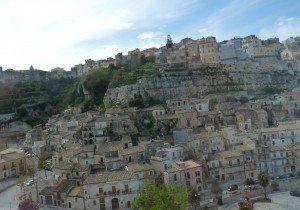 Though many Maltese tend to perceive their archipelago as a solitary group of islands in the centre of the Mediterranean Sea, the nearby island Sicily has always been closely present both geographically and often historically. The Archaeotur project aims to enhance the rediscovery of the archaeological and cultural identities of both islands, particularly by setting up a set of heritage trails which link a number of renowned sites together with other interesting locations that are presently found off the usual beaten tourist track.
Though many Maltese tend to perceive their archipelago as a solitary group of islands in the centre of the Mediterranean Sea, the nearby island Sicily has always been closely present both geographically and often historically. The Archaeotur project aims to enhance the rediscovery of the archaeological and cultural identities of both islands, particularly by setting up a set of heritage trails which link a number of renowned sites together with other interesting locations that are presently found off the usual beaten tourist track.On crisp clear nights, some Sicilians search out for Malta’s twinkling lights across the separating sea known as the channel of Malta. Similarly during a fine limpid day, the area of Mount Etna is distinctly visible from Mdina. One may thus wonder how the ancient populations of these islands might have regarded this ‘nearness’ and what they might have shared. The Archaeotur project focuses on these similarities but also on the differences which vividly portray an affinity but no less a diversity between the two places, thereby enticingly creating a new world to discover just a few kilometres away.
 During last April, a group of Maltese experts in archaeology and in cultural tourism, together with a number of local university students, attended a three-day seminar that was held at the Auditorium San Vincenzo Ferreri in Ragusa Ibla. The Maltese and Sicilian counterparts discussed the plans of the Archaeotur project, gave detailed descriptions of some of the concerned archaeological sites and the findings discovered within, and shared information and ideas about what has been done so far and what work still needs to be tackled so that these sites are conserved and presented in the most professional way to all the visitors.
During last April, a group of Maltese experts in archaeology and in cultural tourism, together with a number of local university students, attended a three-day seminar that was held at the Auditorium San Vincenzo Ferreri in Ragusa Ibla. The Maltese and Sicilian counterparts discussed the plans of the Archaeotur project, gave detailed descriptions of some of the concerned archaeological sites and the findings discovered within, and shared information and ideas about what has been done so far and what work still needs to be tackled so that these sites are conserved and presented in the most professional way to all the visitors. Residing in a small hotel in Ragusa Ibla, the Maltese participants could indulge in the historical aura of the oldest part of this town. Narrow alleys with speeding motorini and compact vans running through them led to some impressive medieval buildings and baroque palaces. Interestingly much of this area had to be rebuilt after a very strong earthquake hit Ragusa on the 11th January 1693, killing about 5000 people and destroying many remarkable buildings such as a castle, palaces, churches, and many houses. After this catastrophe, some survivors in Ragusa wanted to rebuild the destroyed part of the town in the same place whilst others preferred to build their residences in another area, thereby creating two facets of this town which eventually became known as the old and the modern Ragusa. Three bridges which connect the older part to the new part of the town have inspired people to identify Ragusa as the city of bridges. These bridges provide a stunning view of this historical town, its buildings huddled closely together, as if clinging for life to the strong high precipice. In the last years, the old centre has been revived again with the opening of a number of shops, bars, restaurants and hotels. Indeed, Ragusa’s distinguished Sicilian character has attracted many photographers and film producers, the latest of which being the popular Italian TV series of ‘Il Commissario Montalbano’.
Residing in a small hotel in Ragusa Ibla, the Maltese participants could indulge in the historical aura of the oldest part of this town. Narrow alleys with speeding motorini and compact vans running through them led to some impressive medieval buildings and baroque palaces. Interestingly much of this area had to be rebuilt after a very strong earthquake hit Ragusa on the 11th January 1693, killing about 5000 people and destroying many remarkable buildings such as a castle, palaces, churches, and many houses. After this catastrophe, some survivors in Ragusa wanted to rebuild the destroyed part of the town in the same place whilst others preferred to build their residences in another area, thereby creating two facets of this town which eventually became known as the old and the modern Ragusa. Three bridges which connect the older part to the new part of the town have inspired people to identify Ragusa as the city of bridges. These bridges provide a stunning view of this historical town, its buildings huddled closely together, as if clinging for life to the strong high precipice. In the last years, the old centre has been revived again with the opening of a number of shops, bars, restaurants and hotels. Indeed, Ragusa’s distinguished Sicilian character has attracted many photographers and film producers, the latest of which being the popular Italian TV series of ‘Il Commissario Montalbano’.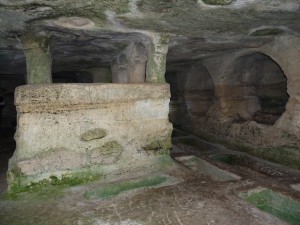 The seminars’ participants were also given the opportunity to visit some of the locations that are included in the Archaeotur project in order to understand better the significance and value of this endeavor. One of the most outstanding was certainly the catacomb of the Grotta delle Trabacche in Ragusa. Recently, this catacomb has been thoroughly cleaned out and conserved, and information posts have been placed in the vicinity in order to guide those visiting this site. Two central opulent and monumental tombs within this catacomb indicate that two individuals who had some importance or a form of authority in their society were buried there. Moreover, one finds several other common tombs that were dug out of the walls and floors of the cavern.
The seminars’ participants were also given the opportunity to visit some of the locations that are included in the Archaeotur project in order to understand better the significance and value of this endeavor. One of the most outstanding was certainly the catacomb of the Grotta delle Trabacche in Ragusa. Recently, this catacomb has been thoroughly cleaned out and conserved, and information posts have been placed in the vicinity in order to guide those visiting this site. Two central opulent and monumental tombs within this catacomb indicate that two individuals who had some importance or a form of authority in their society were buried there. Moreover, one finds several other common tombs that were dug out of the walls and floors of the cavern.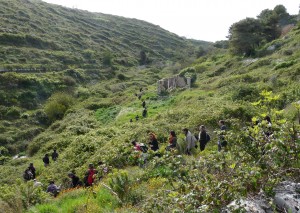 Ironically although hypogea and catacombs are directly connected with death, these sites tend also to provide crucial information about the life and the rituals of the living individuals who used these places. Therefore for example, a multitude of catacombs that are present in Cava Celone might be expressing the situation of an increasing population. These archaeological sites are magnificently enfolded within a wide valley full of wild vegetation, thus endowing the experience of visiting them with a sense of adventure; the silence reigning within the valley allows one to feel truly at one with nature. Meanwhile, the visit to three catacombs in this location revealed the work that still needs to be done on these archaeological sites, including cleaning, conserving, and planning a more practical path which the visitors could use for easy access.
Ironically although hypogea and catacombs are directly connected with death, these sites tend also to provide crucial information about the life and the rituals of the living individuals who used these places. Therefore for example, a multitude of catacombs that are present in Cava Celone might be expressing the situation of an increasing population. These archaeological sites are magnificently enfolded within a wide valley full of wild vegetation, thus endowing the experience of visiting them with a sense of adventure; the silence reigning within the valley allows one to feel truly at one with nature. Meanwhile, the visit to three catacombs in this location revealed the work that still needs to be done on these archaeological sites, including cleaning, conserving, and planning a more practical path which the visitors could use for easy access.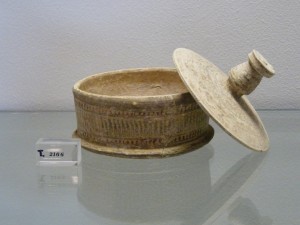 A visit to the Regional Museum of Camarina was undoubtedly distinctive especially because of the extraordinary display of a multitude of findings that were discovered both on land and under the sea of the Santa Croce Camarina area. Many of the artefacts discovered on land pertain to burial rites. Some of them are so refined that it is believed that they belonged to a Greek aristocracy who had immigrated to this area. On the other hand, the numerous objects that were recovered from several wrecks in the bay of Camarina demonstrate that many commercial ships passed through this zone. Among the prestigious exhibits, one finds a bronze archaic helmet that was recovered from a relic that lay seven metres under the sea in front of Punta Braccetto. Several amphorae, a classical Attic-Etruscan helmet, seventy-three clay lamps and some silver items were retrieved from two other relics that were buried in the middle of the bay. Likewise, in 1991, a huge storm revealed the treasure trove of a hoard of 6000 coins that was buried only 200 metres away from the coast.
A visit to the Regional Museum of Camarina was undoubtedly distinctive especially because of the extraordinary display of a multitude of findings that were discovered both on land and under the sea of the Santa Croce Camarina area. Many of the artefacts discovered on land pertain to burial rites. Some of them are so refined that it is believed that they belonged to a Greek aristocracy who had immigrated to this area. On the other hand, the numerous objects that were recovered from several wrecks in the bay of Camarina demonstrate that many commercial ships passed through this zone. Among the prestigious exhibits, one finds a bronze archaic helmet that was recovered from a relic that lay seven metres under the sea in front of Punta Braccetto. Several amphorae, a classical Attic-Etruscan helmet, seventy-three clay lamps and some silver items were retrieved from two other relics that were buried in the middle of the bay. Likewise, in 1991, a huge storm revealed the treasure trove of a hoard of 6000 coins that was buried only 200 metres away from the coast.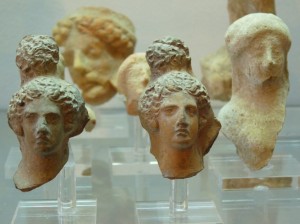 Undeniably, the participants in this seminar had a good taste of the potential of these Sicilian sites that are included in the project of Archaeotur. In the first week of September, a second seminar, this time organized in Malta, will once again reunite Maltese and Sicilian experts and participants so that they can evaluate the work that has been done so far and also to visit some of the Maltese sites which form part of the Archaeotur project.
Undeniably, the participants in this seminar had a good taste of the potential of these Sicilian sites that are included in the project of Archaeotur. In the first week of September, a second seminar, this time organized in Malta, will once again reunite Maltese and Sicilian experts and participants so that they can evaluate the work that has been done so far and also to visit some of the Maltese sites which form part of the Archaeotur project.No doubt this EU project is proving of great benefit towards cross-border cooperation in the sector of heritage conservation and interpretation and no less to cultural tourism which is certainly of substantial benefit to both territories.
Archaeotur is a 1.37 million euro project which is co-financed under the Italia-Malta Programme Cohesion Policy 2007 – 2013 and is part-financed by the EU European Regional Development Fund. The partners involved within it are: Mosta and Rabat Local Councils, Heritage Malta, Malta Tourism Authority, the Comune of Ragusa and the Comune of Santa Croce Camarina, the Superintendence of BB.CC.AA Ragusa, the Archaeological Park of Camarina, and Giritravel SRL. The main purpose of this project is to conserve, interpret and market a number of archaeological sites which generally consist of hypogea and catacombs across the Maltese and Italian borders such as: Ta’ Bistra (Mosta), St Augustine (Rabat), Trabacche, Cava Celone, Cisternazzi and Donnafugata (Ragusa), and Mezzagnone, Pirrera and Mirio (Santa Croce Camarina).
Further information about the Archaeotur project may be obtained through the website www.archaeotur.eu or by contacting Archaeotur Curator, Glen Farrugia, on glen.farrugia@gov.mt
(Note: An edited version of this article was published on FIRST magazine Issue September 2012).
Travelogue
Archives
| M | T | W | T | F | S | S |
|---|---|---|---|---|---|---|
| « Jan | ||||||
| 1 | 2 | 3 | 4 | 5 | 6 | 7 |
| 8 | 9 | 10 | 11 | 12 | 13 | 14 |
| 15 | 16 | 17 | 18 | 19 | 20 | 21 |
| 22 | 23 | 24 | 25 | 26 | 27 | 28 |
| 29 | 30 | |||||
Recent Posts
- A MATTER OF FATE
- MALTA’S PREHISTORIC TREASURES
- THE MAGIC IS IN THE DETAIL
- THE SELLING GAME
- NEVER FORGOTTEN
- Ġrajjiet mhux mitmuma – 35 sena mit-Traġedja tal-Patrol Boat C23
- AN UNEXPECTED VISIT
- THE SISTERS OF THE CRIB
Comments
- Pauline Harkins on Novella – Li kieku stajt!
- admin on IL-KARNIVAL TRAĠIKU TAL-1823
- Albert on IL-KARNIVAL TRAĠIKU TAL-1823
- Martin Ratcliffe on Love in the time of war
- admin on 24 SENA ILU: IT-TRAĠEDJA TAL-PATROL BOAT C23